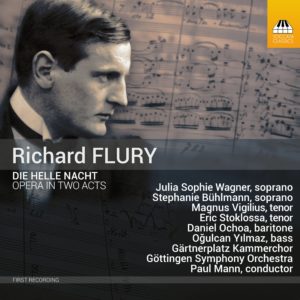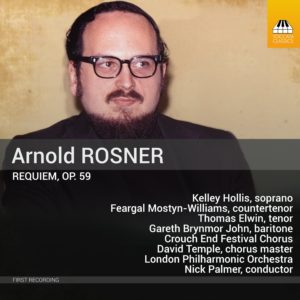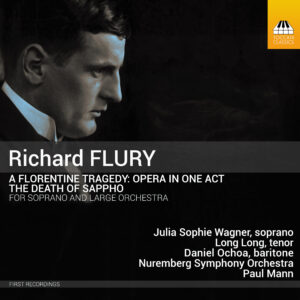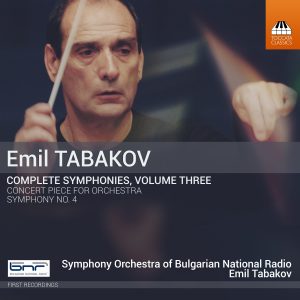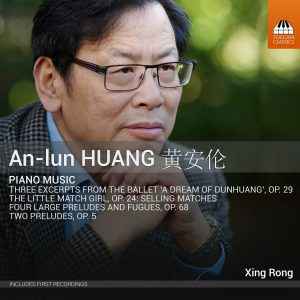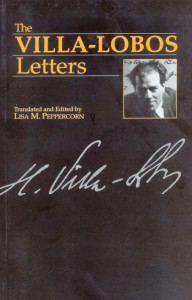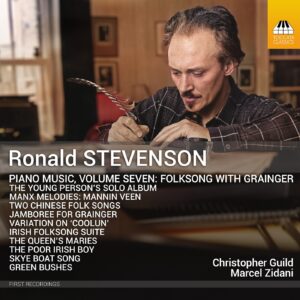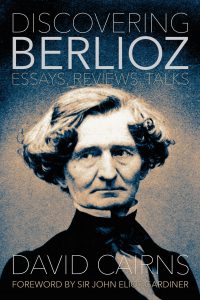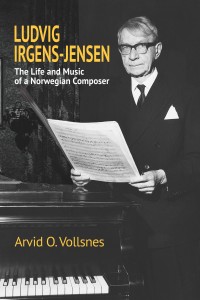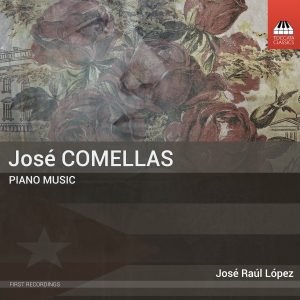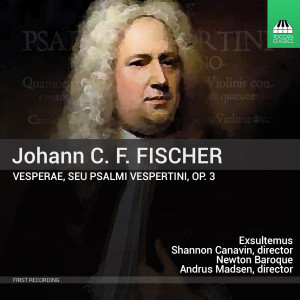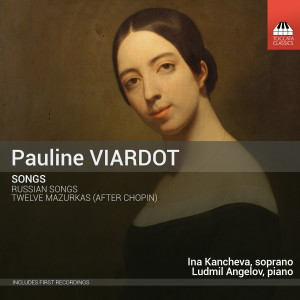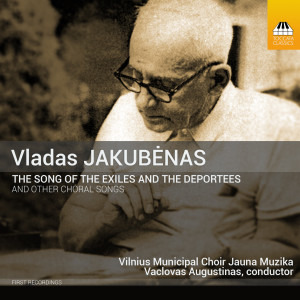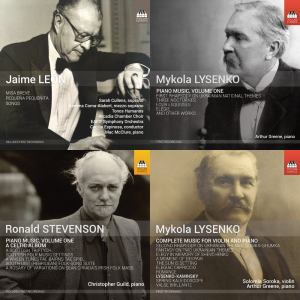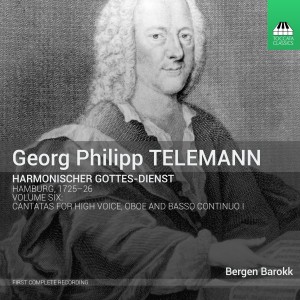Search Results for "1997 Bilbao International Vocal Competition winner Chinese tenor" – Page 4
Showing results for 1997 bulb international vocal competition winner chinese tenor 1997 tenor 1997 1997 1997
Richard Flury: Die helle Nacht, Opera in Two Acts
Die helle Nacht (‘The Bright Night‘), the second opera by the Swiss composer Richard Flury (1896–1967), enjoyed only a single radio broadcast in 1935, the year of its completion, and then remained unheard until this recording. It is revealed as a passionate mixture of sexual jealousy, obsession and murderous revenge, until love and reason ultimately prevail. Flury responded with some of his most ardent music, poised between the late Romanticism of Richard Strauss and occasional more modernist touches that reveal an admiration for Alban Berg – with a further link to Vienna in Flury’s fondness for waltz rhythms.
Julia Sophie Wagner, soprano
Stephanie Bühlmann, soprano
Magnus Vigilius, tenor
Eric Stoklossa, tenor
Daniel Ochoa, baritone
Oğulcan Yılmaz, bass
Gärtnerplatz Kammerchor
Göttingen Symphony Orchestra
Paul Mann, conductor
Georg Philipp Telemann: Harmonischer Gottes-Dienst, Volume 7: Six Cantatas
This is the seventh CD in the first complete recording of the 72 cantatas in Georg Philipp Telemann’s collection Harmonischer Gottes-Dienst, published in Hamburg in 1726 – the first complete set of cantatas for the liturgical year to appear in print. The cantatas are designated for voice, an obligato instrument (recorder, violin, transverse flute or oboe) and basso continuo, and generally take the form of two da capo arias with an intervening recitative. Although intended for worship, both public and private, Telemann’s cantatas are a masterly blend of tunefulness with skilled counterpoint and vocal and instrumental virtuosity.
Bergen Barokk
Franz Vitzthum, counter-tenor
Peter Holtslag, transverse flute
Thomas C. Boysen, theorbo
Markku Luolajan-Mikkola, bass viola da gamba
Hans Knut Sveen, harpsichord (1-6, 10-12,16-18), organ (7-9, 13-15)
Arnold ROSNER: Requiem, Op. 59
Far from being a treatment of the usual Latin, the Requiem of the New York-based Arnold Rosner (1945–2013) sets spiritual and secular texts on death from a number of the world’s cultures, including Whitman, Villon, the Tibetan Book of the Dead, a sutra from Zen Buddhism and the Jewish Kaddish. The work of a young man (Rosner was 28 when he wrote it), this Requiem is both monumental and wildly energetic – but it also encompasses passages of transcendent beauty. His musical language clothes the modal harmony and rhythm of pre-Baroque polyphony in rich Romantic colours, producing a style that is instantly recognisable and immediately appealing. Some of the music was first written for an aborted operatic treatment of Ingmar Bergman’s film The Seventh Seal, where the main character plays chess with Death; in like spirit, Rosner’s Requiem is a major statement of human defiance in the face of mortality, even if its gentle closing pages bring uneasy acceptance
Kelley Hollis, soprano (Tracks 4,8)
Feargal Mostyn-Williams, counter-tenor (Tracks 1,7)
Thomas Elwin, tenor (Tracks 1,2,7)
Gareth Brynmor John, baritone (Tracks 1,5,7)
Crouch End Festival Chorus (Tracks 1,5,6,9)
David Temple, conductor (Track 6), chorus master (Track 1,5,9)
London Philharmonic Orchestra (Tracks 1-5, 7-10)
Nick Palmer, conductor (Tracks 1-5, 7-10)
First recording
Richard Flury: A Florentine Tragedy: Opera in One Act
The Swiss composer Richard Flury (1896–1967) felt the fascination for A Florentine Tragedy, Oscar Wilde’s drama of love and violence in Renaissance Italy, that also attracted his near-contemporary Alexander Zemlinsky: they set the same libretto. Flury responded to the text with this dark and swirling one-act verismo opera, sizzling with sexual tension, the vocal lines of the three characters unfolding over an orchestral texture remarkable for its plasticity and kaleidoscopic colour. It is preceded here by a dignified but impassioned operatic scena setting Grillparzer’s dramatic treatment of the suicide of the Greek poetess Sappho.
Julia Sophie Wagner (soprano), Tracks 1-3, 5-11
Long Long (tenor), Tracks 2-11
Daniel Ochoa (baritone), Tracks 2-11
Nuremberg Symphony Orchestra
Paul Mann (conductor)
Emil Tabakov: Complete Symphonies, Volume Three
The music of the Bulgarian composer-conductor Emil Tabakov (b. 1947) explores the darker side of the human spirit in epic scores as austere as they are powerful. Behind the plain title of Tabakov’s Concert Piece for Orchestra (1985) lurks an extraordinary explosion of violence and anger. And the Fourth Symphony (1997) sandwiches a wild Bulgarian dance between two glacial slow movements, the second with an episode of Tchaikovskian lyricism at its centre; the finale is a dark, whirling moto perpetuo – a ride through hell.
Symphony Orchestra of Bulgarian National Radio
Emil Tabakov, conductor
An-Lun Huang 黄安伦: Piano Music
An-lun Huang, born in Guang Zhou, Guangdong, in 1949, and a resident of Toronto since 1986, survived the hardships of the Cultural Revolution to make his mark as pianist and composer both in China and in the west. In his piano music he is concerned to find a meeting ground between the piano as a western instrument and his own roots as a Chinese musician. This album shows the cross-fertilisation going in both directions, with a lively dance suite from a ballet inspired by the ancient cave art in Dunhuang, in western China, and the universal figure of Bach stimulating a substantial set of polyphonic compositions where western harmonies are refracted through Chinese colours.
Xing Rong, piano
The Villa-Lobos Letters
Translated and Edited by Lisa M. Peppercorn
With a Reminiscence of Villa-Lobos by Ralph Gustafson
Extent: 212 pages
Composition: Demy octavo ~ Illustrated ~ Chronology ~ Bibliography
Illustrations: 40 b/w
Ronald Stevenson: Piano Music, Volume Seven – Folksongs with Grainger
Percy Grainger (1882–1961) and Ronald Stevenson (1928–2015), both composer-pianists of the Golden Age of keyboard virtuosity, shared a passion for folksong, especially the modal Celtic melodies from the fringes of the British Isles. Though the two never met, they corresponded for many years, with Stevenson arranging many of Grainger’s transcriptions in a deliberate act of homage to the older man, whose quirky originality brought Stevenson illumination on his own idiosyncratic path. This seventh instalment in Christopher Guild’s Toccata Classics survey of Stevenson’s piano music uncorks the exultant good humour that he and Grainger found on that common Celtic ground.
Christopher Guild, piano
Marcel Zidani, piano
Discovering Berlioz: Essays, Reviews, Talks
by David Cairns
Foreward by Sir John Eliot Gardiner
Extent: 400 pages
Size: royal octavo
Published: December 2019
ISSN 0264-6889
Musicians on Music, No. 12
Ludvig Irgens-Jensen: The Life and Music of a Norwegian Composer
Extent: 368 pages
Composition: Royal octavo ~ Illustrations ~ LoW ~ Irgens-Jensen as Poet ~ Bibliography ~ Discography ~ Index of Irgens-Jensen's Music ~ General Index ~ Sampler CD of Irgens-Jensen’s Music
José Comellas: Piano Music
Cuba’s heritage of classical music is composed largely of three strands: the inheritance of colonial times and the subsequent influence of African and European musicians. But even after three hundred years of development, most Cuban composers remain unknown to international audiences. This first recording in a series intended to uncover some of those lost voices presents piano pieces by José Comellas (1842–88), of Catalan descent. Most of them are salon works that blend Chopin and Gottschalk, but Comellas’ ambitions also went further, with the first sonata published by any Cuban composer.
José Raúl López, piano
Johann Caspar Ferdinand Fischer: Vesperae, Op. 3
In his day Johann Caspar Ferdinand Fischer (1656–1746) was renowned as one of the major musicians in southern Germany, especially for his distinctly French keyboard music. His vocal music, by contrast, which has been far less thoroughly explored, looked to Italy for its models, as his captivating 1701 setting of the Vespers reveals. In keeping with the practice of the time, this first recording of Fischer’s Vespers includes music from elsewhere in his output, as well as two sonatas by the Munich-based Johann Christoph Pez (1664–1716).
Exsultemus
Shannon Canavin, director
Newton Baroque
Andrew Madsen, director, organ
Pauline Viardot: Songs
Pauline Viardot (1821–1910) was one of the most extraordinary women in the history of music. Daughter of the Spanish tenor Manuel García and sister of the mezzo-soprano Maria Malibran, she studied piano with Liszt and counterpoint and harmony with Reicha, made her debut, also as a mezzo, at the age of sixteen and went on to inspire composers of the stature of Berlioz, Chopin, Gounod, Meyerbeer, Saint-Saëns, Schumann and Wagner, And she was no mean composer herself, as these passionate songs demonstrate. Twelve of them are arrangements of mazurkas by her good friend Frédéric Chopin; the others set some major poems in Russian, a language she spoke fluently.
Ina Kancheva, soprano
Kamelia Kader, mezzo-soprano
Christo Tanev, cello
Ludmil Angelov, piano
Vladas Jakubėnas: The Song of the Exiles and The Deportees and Other Choral Songs
The Lithuanian Vladas Jakubėnas (1904–78) is one of a lost generation of Baltic composers. A student of Schreker in Berlin, he returned home to help build the musical culture of his country. But the Nazi invasion and Soviet occupation drove him into exile and, after five years in refugee camps in Germany, he settled in Chicago, playing an important role in the Lithuanian diaspora in North America. These choral songs show the deep identification of his late-Romantic style with the folk-music of the land he was forced to leave behind.
Vilnius Municipal Choir Jauna Muzika
Jurgita Mintautiene, soprano
Gintautas Skliutas, tenor
Dainius Jozenas, piano
Vaclovas Augustinas, conductor
March 2015 CD Bundle
Included in this bundle:
Georg Philipp Telemann: Harmonischer Gottes-Dienst, Volume 6: Seven Cantatas
This is the sixth CD in the first complete recording of the 72 cantatas in Georg Philipp Telemann’s collection Harmonischer Gottes-Dienst, published in Hamburg in 1726 – the first complete set of cantatas for the liturgical year to appear in print. The cantatas are designated for voice, an obbligato instrument (recorder, violin, transverse flute or oboe) and basso continuo, and generally take the form of two da capo arias with an intervening recitative. Although intended for worship, both public and private, Telemann’s cantatas are a masterly blend of tunefulness with skilled counterpoint and vocal and instrumental virtuosity.
Bergen Barokk
Stay In the Know
JOIN THE TOCCATA NEWSLETTER
"*" indicates required fields
By visiting our site, you agree to our privacy policy regarding cookies, tracking statistics, etc.
